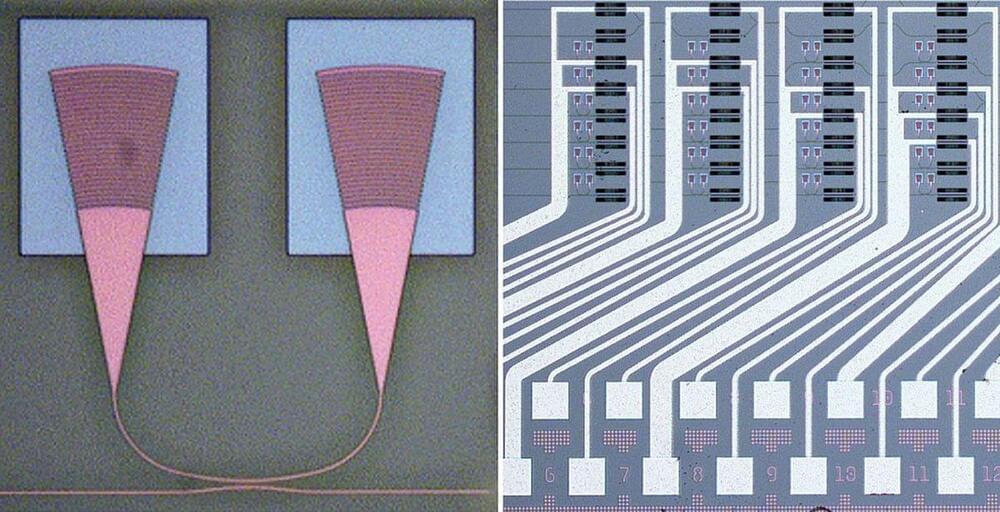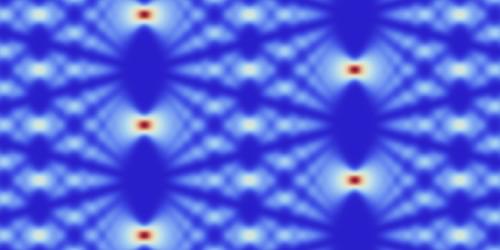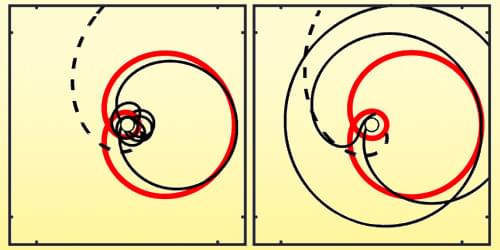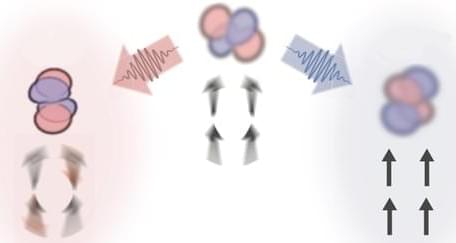The current work springs from a 2007 study in which Cavalleri and his team reported using terahertz laser pulses to distort a lattice into favoring a particular ground state [2]. The pulses excited specific, quantized vibrations—phonons—that changed the electronic state of a crystal, yielding a transient drop in electrical resistance of 5 orders of magnitude.
In their new experiment, the researchers selected three laser frequencies that were separately coupled to one of several possible lattice distortions in YTiO3. Using a magneto-optical pump-probe setup, they examined how each of the excitations affected the crystal’s structure and its magnetism. Specifically, they observed whether the polarization of the light reflected by the crystal changed when viewed in opposite directions. A clockwise–counterclockwise shift in the polarization of the reflected light would be a sure sign of time-reversal invariance, which happens only in the presence of magnetic order.
They found that ultrafast laser pulses tuned to a phonon frequency of 9 THz caused the YTiO3 crystal to fully magnetize just above zero K. They then showed that this order, instead of vanishing at 27 K, remained stable up to at least 80 K, the highest temperature that they measured. What’s more, the magnetism persisted for many nanoseconds, 6 orders of magnitude longer than the femtoseconds-long laser pulses. The team attribute this long-lasting state to the stability of the structural distortions induced by energy deposited by the laser.








